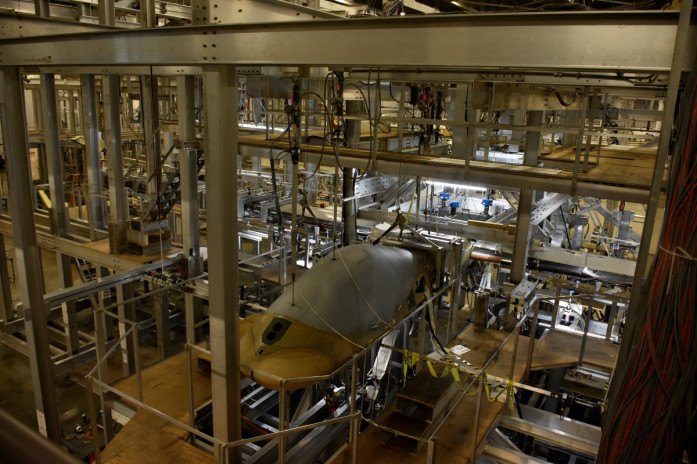General Atomics Aeronautical Systems, Inc. (GA-ASI) has reached a significant milestone in the development of its MQ-9B Remotely Piloted Aircraft (RPA). The company completed full-scale fatigue testing of the airframe on September 30, 2024, marking an essential step in the certification process of the drone. The testing, designed to simulate the lifespan of the aircraft, was carried out at Wichita State University’s National Institute for Aviation Research (NIAR) in Kansas and covered the aircraft’s “second lifetime” of operation, equivalent to 80,000 operating hours.
This phase of testing is part of the broader certification effort under NATO standard STANAG 4671. The MQ-9B airframe, which includes the SkyGuardian®, SeaGuardian®, and Protector RG Mk1 models, is being put through a rigorous three-lifetime test process. Each “lifetime” represents 40,000 operational hours. The completion of this second lifetime test brings GA-ASI closer to proving the airframe’s durability and longevity, which is vital for customer confidence as the drone enters service.
The fatigue test simulates the drone’s operational service by repeatedly applying structural loads to the airframe, helping to identify any potential weaknesses before the aircraft is deployed in the field. These findings will be crucial for the certification process and will aid in developing inspection and maintenance schedules for the MQ-9B, ensuring long-term reliability.
“This testing is an integral part of validating the airframe design and is key to achieving airframe certification before service entry,” said Chris Dusseault, Vice President of MQ-9B in Europe. “The successful completion of this fatigue test reassures our customers that the SkyGuardian and SeaGuardian models meet stringent design standards and will be reliable from the moment they enter service.”
The fatigue testing also includes intentional damage simulations on the airframe’s critical components. These tests demonstrate the aircraft’s ability to withstand operational wear and tear, further validating the robustness of the design. The second lifetime test simulates normal operating conditions, while the third test, to be completed later, will apply damage to assess how the aircraft performs under stress.
Testing of the MQ-9B began in January 2024, and the fatigue test airframe was specially built for this campaign. The MQ-9B series is GA-ASI’s most advanced RPA, with models used for various military and maritime operations. The Protector RG Mk1 is already being delivered to the UK Royal Air Force (RAF), while contracts for the MQ-9B have been signed by Belgium, Canada, Japan, Taiwan, and the US Air Force, which supports Special Operations Command. The Japan Coast Guard is currently operating the SeaGuardian for maritime missions, while the Japan Maritime Self-Defense Force (JMSDF) has selected the SeaGuardian for its Medium-Altitude, Long-Endurance (MALE) RPA System Trial Operation Project.
This comprehensive testing programme underscores the MQ-9B’s potential to provide long-term operational capability across a range of missions, from military to maritime operations. For more information, visit www.ga-asi.com.


